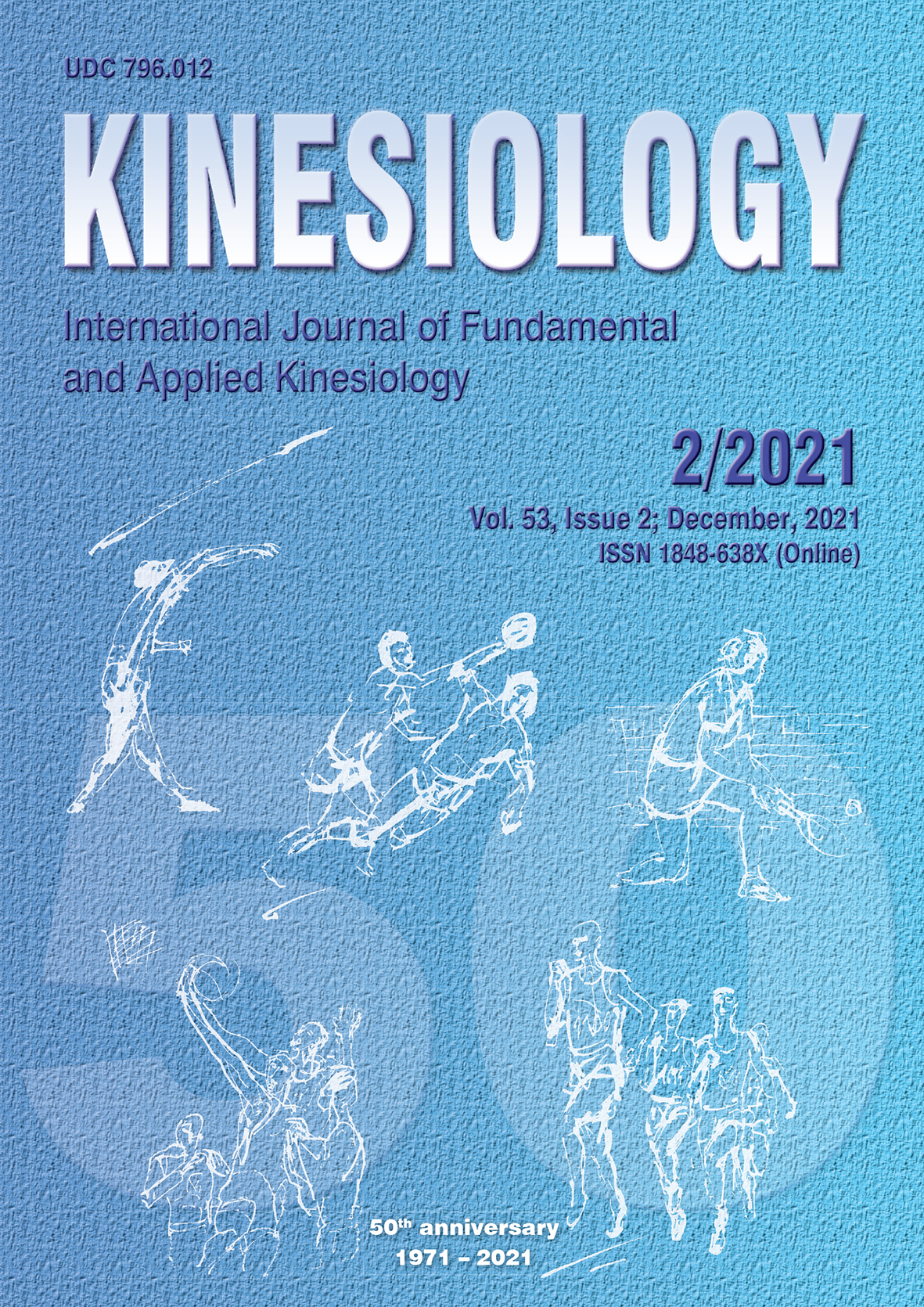THE LABORATORY-ASSESSED PERFORMANCE PREDICTORS OF ELITE CROSS-COUNTRY MARATHON MOUNTAIN BIKERS
Abstract
The study aimed to investigate the relationship between laboratory-assessed variables and crosscountry marathon mountain biking (XCM-MTB) performance to suggest a more practical approach to monitor performance during the competitive phase. Nine elite athletes performed a battery of tests during the competitive phase of the season, one week before the race. Correlations between the physiological and neuromuscular laboratory-assessed variables and mean race completion time were verified and a multiple regression model was calculated. Cycling economy (r=0.86), power output at the first (POVT1; r=-0.73) and second ventilatory threshold (POVT2; r=-0.94), VO2peak (r=-0.71), peak power output (r=-0.91); peak power (r=-0.80), and mean power (r=-0.85) were very strongly related to race performance. TMG-derivate factors as rectus femoris (r=-0.61) and biceps femoris (r=-0.59) contraction velocity, 30-cm drop jump performance (r=-0.59), mean propulsive power in jump squat at 40% (JS40%; r=-0.65) and 60% (JS60%; r=-0.62) of athlete’s body weight and lower limbs maximal isometric voluntary strength (r=-0.59) were strongly related to race completion time. In an isolated way, the POVT2 explained 87% of race performance. Although both physiological and neuromuscular variables are related to XCM performance, the POVT2 seems to be the main variable during the competitive phase and an easy-to-apply approach should be used to monitor athletes’ performance.
Key words: cycling, sports performance, muscle power, power output
Downloads
Published
How to Cite
Issue
Section
License

This work is licensed under a Creative Commons Attribution-NonCommercial 4.0 International License.
At Faculty of Kinesiology we recognize that access to quality research is vital to the scientific community and beyond. Kinesiology is non-profit journal and all costs of publishing and peer review process are covered by the publisher itself or other funding sources like Ministry of Science and Education of the Republic of Croatia. Full text papers are also available free of charge at http://hrcak.srce.hr/kineziologija. There are no restrictions on self archiving of any form of paper (preprint, postprint and publisher's version).
Articles are distributed under the terms of the CC BY - NC 4.0
Kinesiology does not charge any fees to authors to submit or publish articles in our journal.


